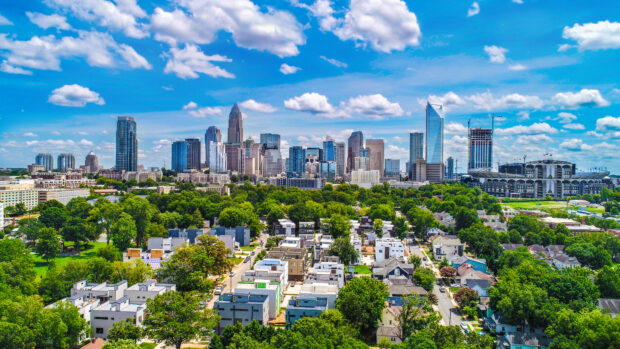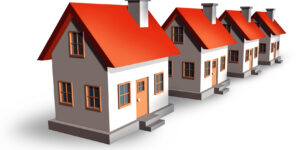
Roof claims account for nearly a third of all U.S. property insurance losses, or about 30%[1], and trees are very often how nature takes its toll on a structure. Some of the major causes of tree-related claims—severe wind, thunderstorms, and damaging hail—increased 50% over a 10-year period compared with the preceding decade.[2]
The approach of winter brings its own range of extreme weather, including wind, heavy snow, and ice that can combine with the presence of trees to damage roofs in many parts of the country. Meanwhile, wildfire is steadily becoming less seasonal and more of a year-round phenomenon. Wherever these perils occur, the role of trees calls for close monitoring by commercial property insurers. Broadly, the considerations are divided into tree overhang and defensible space.
Tree overhang is the percentage of trees that occupy the same vertical space as a roof, posing multiple threats:
- Fallen trees or branches may damage the roof and the structure below.
- Debris, such as leaves, can clog drainage systems, causing pooling on flat roofs or ice dams in gutters, all of which may damage roofing materials or allow water to leak into the structure.
- Animals can use overhanging branches to access the roof, where they may damage materials or roof-mounted equipment and enter chimneys or attics, causing further harm.
Defensible space is the specified margins around a structure—typically 30 feet and 100 feet—that contain trees or other buildings. More defensible space provides a buffer against wildfire and other hazards:
- Combustible vegetation and other potential fuels close to structures could increase wildfire risk.
- Fallen trees can impede access to a property and cause power outages if they fall on overhead wires.
- Even if not overhanging the roof, trees can fall on a structure and cause damage.
A national issue with local characteristics
Local conditions dictate which perils are of most concern when assessing tree coverage. Exposures may include severe thunderstorms, winter storms, hail, and straight-line winds. These, in turn, can point underwriters to different tree-related issues for monitoring.
Underwriters may seek documentation of preventive maintenance such as tree trimming or impose higher or percentage-based deductibles on roofs to reflect a greater potential for damage.
Managing valuable resources
Properly assessing tree coverage may call for an on-site inspection or a drone survey. But other tools are available to help underwriters allocate inspection resources. Aerial imagery can deliver a holistic view of trees encroaching on defensible space or posing a hazard to roofs. This information can help underwriters triage, manage, and mitigate risks from weather and wildfire—and it’s now available as part of Verisk’s Roof Underwriting Report, a comprehensive tool for assessing roof risk that can significantly reduce the need for on-site inspections.
Available through ProMetrix®, Verisk’s robust suite of commercial property underwriting solutions, the Roof Underwriting Report uses proven InsurTech, including artificial intelligence and computer vision, to support efficient underwriting and automated workflows.
See how the enhanced Roof Underwriting Report from Verisk can help commercial property underwriters see the forest and the trees.
By Binh Huynh and Gavin Mills ARM, CPCU
[1] Verisk analysis.
[2] Verisk PCS business data—past decade compared to decade prior.



















 Middle Manager Is the Middle Child
Middle Manager Is the Middle Child  Report: Insurers Keen on Replacing Legacy Systems Seek More Agility
Report: Insurers Keen on Replacing Legacy Systems Seek More Agility  What Role Does Insurance Play in a Politically Charged Climate?
What Role Does Insurance Play in a Politically Charged Climate?  Project 2025 Plan to End NFIP Welcomed by Some, Rejected by Others in Insurance
Project 2025 Plan to End NFIP Welcomed by Some, Rejected by Others in Insurance 




